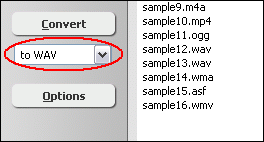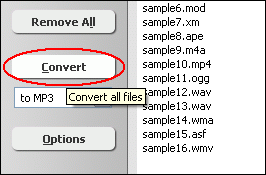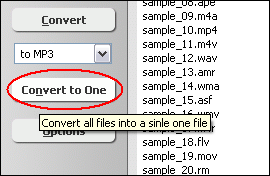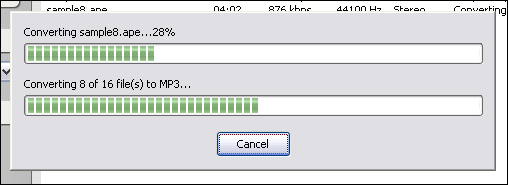MLP to WAVConvert MLP to WAV in Batch, MLP to WAV Converter |
 |
| Home | Getting Started | Download | Buy Now! | Screen Shots | FAQ | Support | Contact |
Total Audio MP3 Converter converts MLP to WAV. The software is an ALL-IN-ONE audio converter that supports more than 150 audio and video files. Total Audio MP3 Converter supports batch conversion and is full compatible with Windows 10/8/7.
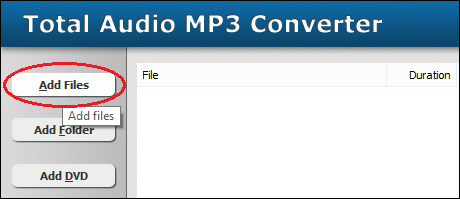 Click on "Add Files" to choose MLP files and add them to conversion list. 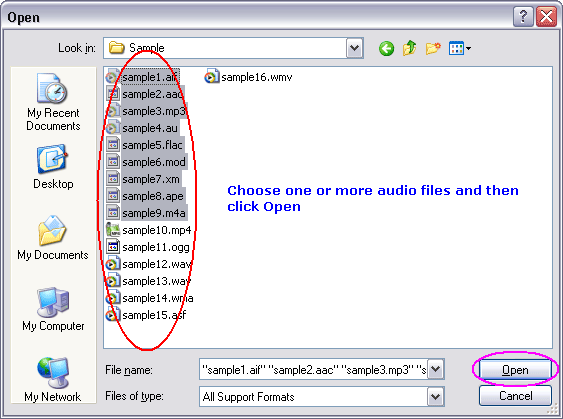 Choose one or more MLP files you want to convert and then click on Open. 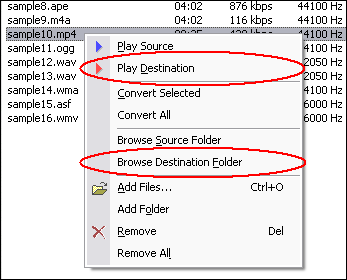 Right-click converted item and choose "Play Destination" to play the destination file, choose "Browse Destination Folder" to open Windows Explorer to browse the destination file. Total Audio MP3 Converter is 100% clean and safe to install.
It's certified by major download sites. What is MLP? The MLP is used by Meridian codec. Audio compression used on DVD video discs. MLP performs lossless compression of up to 63 audio channels including 24-bit material sampled at rates as high as 192kHz. Lossless compression has many applications in the recording and distribution of audio. In designing MLP we have paid a lot of attention to the application of lossless compression to data-rate-limited ransmission (e.g. storage on DVD), to the option of constant data rate in the compressed domain and to aspects that impact on mastering and authoring. MLP was targeted to provide:
MLP provides for up to 63 channels, but applications tend to be limited by the available data rate. To aid compatibility, MLP uses a hierarchical stream structure containing multiple substreams and hierarchical additional data. With this stream structure decoders need only access part of the stream to playback subsets of the audio. Suitable use of the substreams also allows 2-channel compatibility; a low-complexity decoder can recover a stereo mix from a multichannel stream. Figure 1 gives an overview of the process of losslessly compressing a stream containing multiple audio channels and auxiliary data onto a disc. What is WAV? Both WAVs and AIFFs are compatible with Windows, Macintosh, and Linux operating systems. The format takes into account some differences of the Intel CPU such as little-endian byte order. The RIFF format acts as a "wrapper" for various audio compression codecs. Though a WAV file can hold compressed audio, the most common WAV format contains uncompressed audio in the linear pulse code modulation (LPCM) format. The standard audio file format for CDs, for example, is LPCM-encoded, containing two channels of 44,100 samples per second, 16 bits per sample. Since LPCM uses an uncompressed storage method which keeps all the samples of an audio track, professional users or audio experts may use the WAV format for maximum audio quality. WAV audio can also be edited and manipulated with relative ease using software. The WAV format supports compressed audio, using, on Windows, the Audio Compression Manager. Any ACM codec can be used to compress a WAV file. The UI for Audio Compression Manager may be accessed through various programs that use it, including Sound Recorder in some versions of Windows. Beginning with Windows 2000, a WAVE_FORMAT_EXTENSIBLE header was defined which specifies multiple audio channel data along with speaker positions, eliminates ambiguity regarding sample types and container sizes in the standard WAV format and supports defining custom extensions to the format chunk. MLP to WAV Related Topics: AMV to WAV, DIF to WAV, DIVX to WAV, DV to WAV, FLIC to WAV, FLV to WAV, GSM to WAV, M2TS to WAV, M2V to WAV, M4B to WAV, MPGA to WAV, MTS to WAV, MTV to WAV, MVI to WAV, OMA to WAV, PSX to WAV, PVA to WAV, QT to WAV, SMK to WAV, SOL to WAV, STR to WAV, WAVE64 to WAV, WM to WAV, WMD to WAV, XA to WAV, MP4 to WAV, MPC to WAV, MTM to WAV, OGG to WAV, S3M to WAV, SND to WAV, SPX to WAV, MMF to WAV, MOV to WAV, MP2 to WAV, MPA to WAV
|
| Home | Getting Started | Download | Buy Now! | Screen Shots | FAQ | Support | Contact | Links |
| Copyright © 2006-2017 Hoo Technologies All rights reserved. Privacy Policy |
